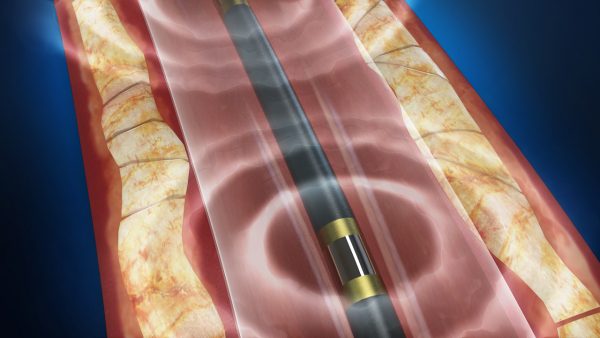In the United States, more than 9 million people suffer from peripheral vascular disease each year. Peripheral vascular disease is often caused by accumulation of arterial plaque in the blood vessels of the legs, causing pain in the patient's legs and affecting normal walking. In severe cases, surgery may be required or even amputation may be required. Even more unfortunately, more than half of patients with peripheral vascular disease have moderate or severe calcification. With age, arterial calcification is also getting worse. Advances in medicine and the spread of preventive health care have prolonged human life, and cardiovascular disease has gradually become a common chronic disease.
Traditional devices and techniques for the treatment of occlusive calcification have many limitations, and because of imperfections and unpredictability, they often lead to severe soft tissue damage and require additional treatment. The most advanced equipment is only for superficial calcium, and can not remove deep calcium, often with lesion expansion. It has become increasingly difficult to treat patients with arterial calcification.
In the past few days, Shockwave Medical, a California-based startup, claimed that its Lithoplasty system can effectively solve the problems of traditional equipment. The equipment has been approved by the FDA, becoming the first and only sulphur treatment using sonic treatment. Techniques for peripheral arterial disease.

Shockwave Medical's Lithoplasty System
1. Lithoplasty system: deep clearance of vascular calcification, reducing soft tissue damage
The Shockwave Medical Lithoplasty system selectively labels hardened calcium in patients with cardiovascular disease. The device integrates two popular and powerful technologies: sonic calcium interference (also known as sonic crushing technology, which is commonly used to treat kidney stones) and angioplasty balloon catheter devices. Combine sonic gravel and balloon technology with a simple balloon catheter platform. Intermittent pulses destroy the superficial calcium in the superficial and vascular walls, while minimizing soft tissue damage, avoiding balloon dilatation at low air pressure and causing blood vessels to block again affecting blood circulation.
“Lithoplasty is a new physiotherapy mechanism that revolutionizes the care of calcified peripheral vascular disease,†said Kenneth Rosenfield, director of the Department of Vascular Medicine and Interventions at the Massachusetts General Hospital. “The equipment used today for treatment has obvious shortcomings that cannot be effective. Clearing blood vessels with vascular damage and complications. Lithoplasty is a unique method that can be used to treat these lesions effectively by maximizing the device (including the scaffold and other additional measures) built into the balloon catheter platform. Reduce the risk of vascular damage."
Product feature:
1. Small volume, light weight, convenient in storage and transportation before use.
2. Reduce manpower and save time for the emergency.
3. Non-toxic In the usage, tasteless, pollution-free
4. Environmental protection. Solid in nature can be completely decomposed, no residue.
5.The contents of the bag can be poured into the farmland aftre using, Conserve soil and water.
Application: To keep water out of subways, underground facilities, water plants and flowers .
Water Active Flood Bag,Water Active Flood Bags,Water Active Sandbags,Water activated flood bag
Denilco Environmental technology(Suzhou)Co., Ltd. , https://www.wflood.com